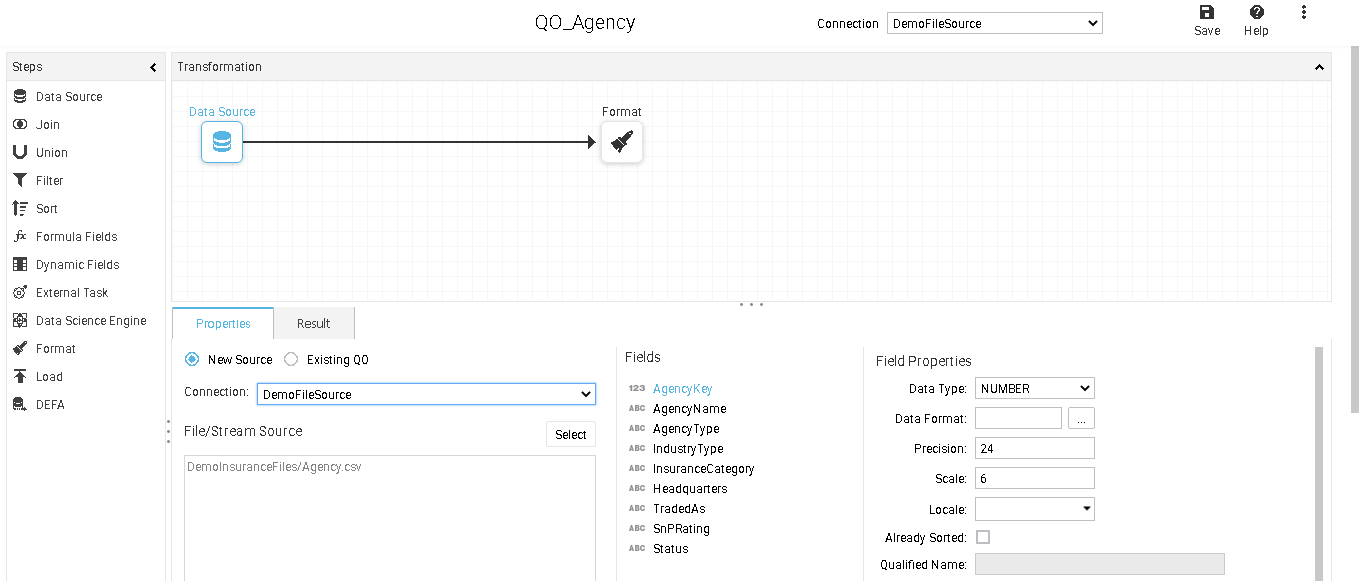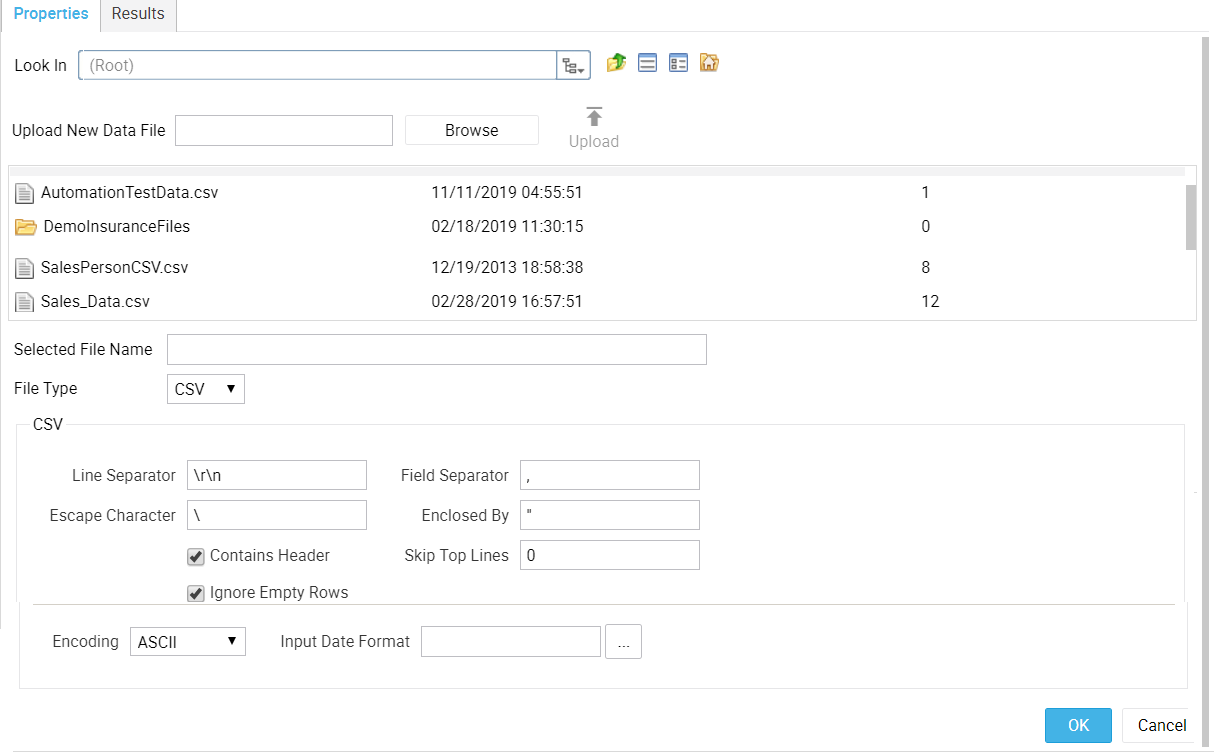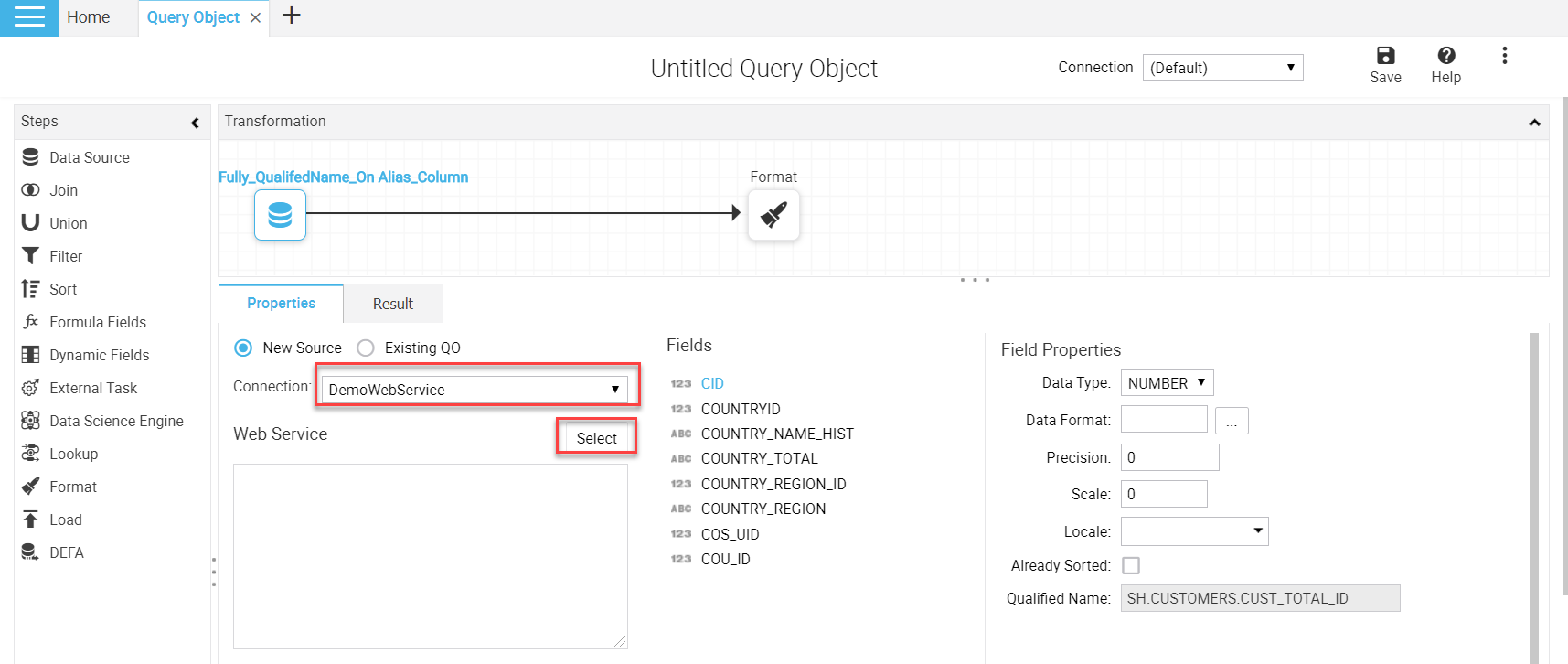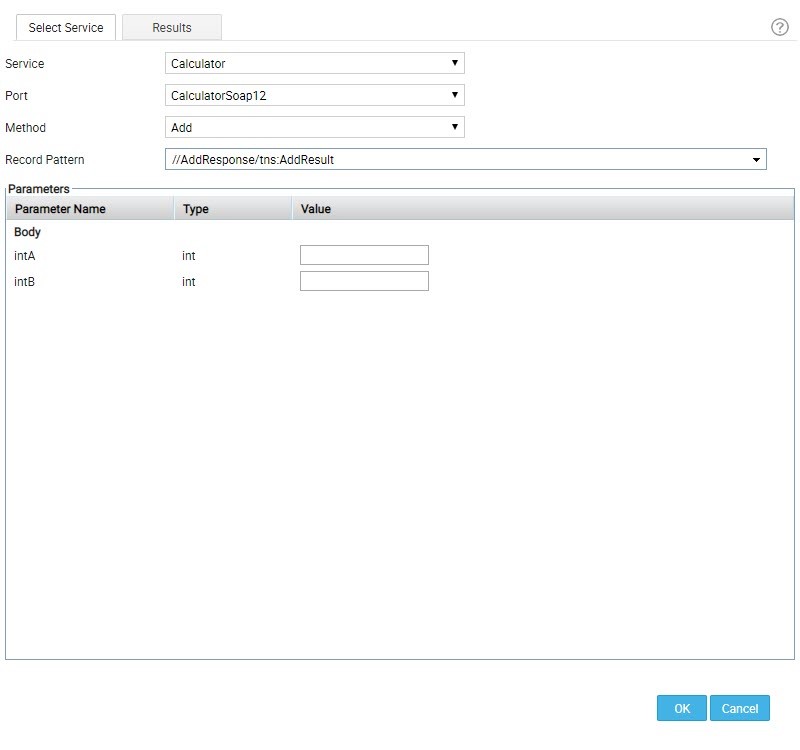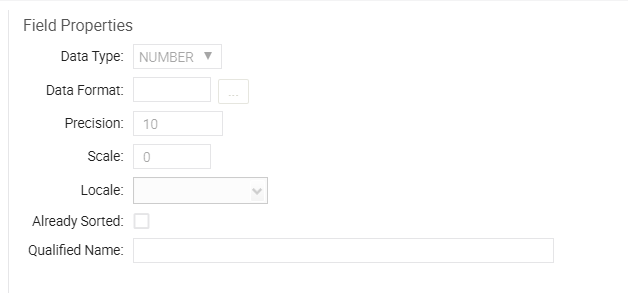The Data Source step brings data into the Query Object from:
RDBMS source using SQL or stored procedure
File/ IOT Stream source
Web service
Another Query Object
Big Data / Non-relational databases
Kyvos
There can be multiple Data Source steps in a Query Object. Each Data Source step has the following properties to be set.
Property | Value | Comment |
New Source -Existing QO | New Source -Existing QO | You choose whether a new SQL or file source is to be created or you can use an existing Query Object. |
Connection | Select from available list or Select (Parent) | When selected (Parent), then this Data Source fetches data from the connection specified in the Connections option present at the top left options bar (Refer Figure 2) or falls back to default connection configured for the user. When a connection name is selected, then this Data Source fetches data only from that connection, irrespective of Query Object connection or connection of other Data Source in this Query Object. |
SQL | A Complete SQL statement designed with the help of SQL Wizard | This property is visible when you select a connection that points to an RDBMS. The SQL Designer window opens for you to design an SQL or procedure. See the below section for SQL Designer details. |
File/Stream Source | File name, File Type and parsing details designed with help of File Selector Wizard | This property is visible when you select a connection that points to a file system. The File Selector window opens to specify file name, file type and parsing details. |
Web Service | Web Service Name, Port, Method and Record Pattern details designed with help of Web Service Selector | This property is visible when you select a connection that points to a Web Service. The Web Service Selector window opens to specify web service, port, method and record pattern. |
Existing QO | Select an existing Query Object | The output of the select Query Object becomes input of this Data Source |
Fields | Lists all fields available in this Data Source | The fields along with Field Properties can be set as discussed later. |
File as Data Source
This wizard allows you to select a file and provide parsing properties to fetch records from that file.
On the Query Object Editor screen,
Figure 6: File as a data source
Select a connection or file as a data source and click Select next to File/Stream Source. The below screen appears.
This wizard allows you to select a file and file type and provide parsing properties to fetch records from that file.
Web Service as Data Source
This wizard allows you to select a web service available from the connected Web Service provider and provides method, record pattern details.
On the Query Object Editor screen,
Figure 7: Web Service as a Data Source
Select a connection or web source and click Select under Web Service. The below screen appears.
By reading the WSDL, it also prompts for parameters required to request the Web Service.
Note: Intellicus also supports JSON as a File Type for File and Web Service data sources in a Query Object.
Figure 8: Field Level Properties
Kyvos as a Data Source
When you select the connection created using Kyvos as a provider, you can write/edit the required query to fetch data. Click on Design to open the SQL Editor window.
A window to select the Semantic Model will open. Select the required semantic model from the respective category. You can also search for the semantic model. Click Select.
On the bottom left pane, the dimensions and measures for the selected semantic models will be listed. In the Edit tab, write the required query using the dimensions and measures listed for various semantic models. Click Result to view the outcome.
Note
You will only view the folders and underlying semantic models you have access to in Kyvos viz.
You will only have access to semantic model data permitted for you in Kyvos Viz, based on the applied data security associated with the selected semantic model.
Field Properties
The Field Level Properties at Data Source step are listed in the table below.
Property | Values | Comments |
Data Type | CHAR,NUMBER, DATE, BINARY | Select the data type of the incoming data |
Data Format | Format String | Specify the format of the incoming data. This is useful only if Date or IP Address type data are incoming in CHAR fields but needs to be converted to Date and Number types for further use |
Database Time Zone | Select Time zone from the list | Specify the time zone in which the incoming date data is stored. This is useful only if date time data needs to be converted to other time zone data based on reporting requirement.For example, when incoming GMT data need to show EDT (or any requested TZ) value in report, specify that the incoming data is GMT. The output format is generally specified in Format step or in user preference |
Length/Precision | Enter | Length of field for Char data typePrecision or length of field for Number data type |
Scale | Enter | Scale or number of digits after decimal point |
Locale | Select from the list | Select the language/ country in which the incoming date data is stored |
Sort Priority | Number 0-N | If the data is sorted on multiple fields then specify sort priority number of this field.Primary sort field should be the lowest number |
Sort Criteria | Ascending/Descending | Specify sort as either ascending or descending order |
Qualified Name | Enter | This name can be used as the field name to resolve field name ambiguity when same field is fetched from two tables or expressions |
